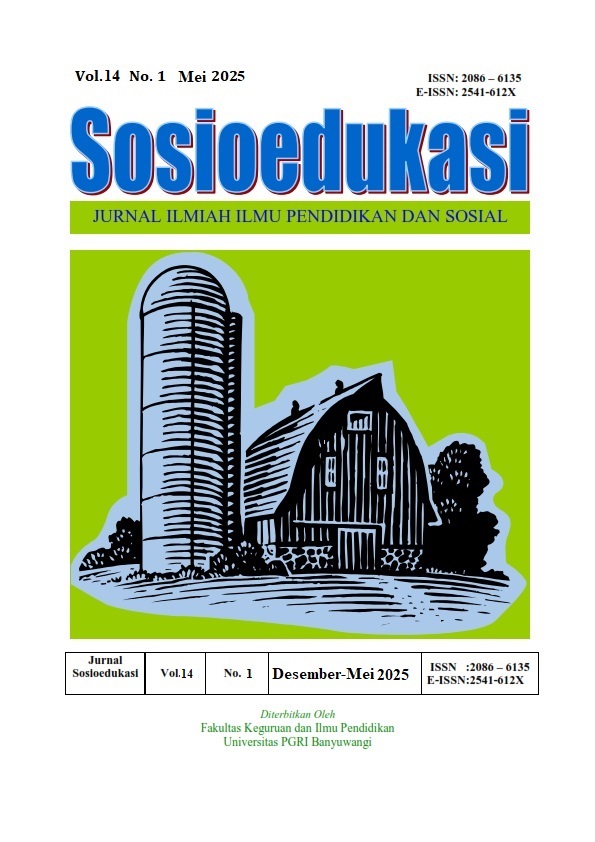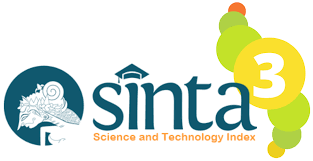WOMEN'S PERCEPTION OF FADING BENEFITS FROM BEAUTY PRIVILEGE STEREOTYPES
PERSEPSI PEREMPUAN TENTANG PUDARNYA KEUNTUNGAN DARI STEREOTIP BEAUTY PRIVILEGE
DOI:
https://doi.org/10.36526/sosioedukasi.v14i1.5362Keywords:
Perception, stereotip, women, workplace, and beauty privilegeAbstract
The phenomenon of beauty privilege is closely related to the standardization of beauty in Indonesia, particularly within the context of the workplace. Stereotypes surrounding beauty privilege assume that individuals who meet conventional beauty standards or possess attractive appearances gain certain advantages, such as preferential treatment, ease in obtaining employment, or opportunities for promotion. However, current trends indicate a shift in perceptions regarding the benefits of beauty privilege. This study aims to explore working women’s perceptions of the evolving meaning of beauty privilege and its role in the workplace. A descriptive qualitative approach was employed, using convenience sampling. Data were collected through interviews with three female participants from diverse professional backgrounds. The findings reveal that while beauty privilege still exists in certain employment sectors, its advantages are gradually diminishing. There is now a growing emphasis on individual competencies in the workplace, accompanied by a growing awareness that physical appearance is no longer the primary determinant of professional success. One of the positive impacts of the fading influence of beauty privilege is the increased freedom to work without the pressure to conform to conventional beauty standards, as well as greater motivation to develop and optimize one’s abilities. Furthermore, the decline of beauty privilege stereotypes helps reduce social envy among employees. These findings also reinforce the argument that skills are becoming the key factor in the workplace, although physical appearance may still play a supporting role.
References
Aprilianty, S., Komariah, S., & Abdullah, M. N. A. (2023). Konsep beauty privilege membentuk kekerasan simbolik. Ideas: Jurnal Pendidikan, Sosial, Dan Budaya, 9(1), 149. https://doi.org/10.32884/ideas.v9i1.1253
Ayu, A. N. (2019). Penampilan sebagai komunikasi nonverbal perempuan dalam dunia pekerjaan. Universitas Sultan Ageng Tirtayasa.
Branscombe, N. R., & Baron, R. A. (2023). Social psychology.
Calhoun, J. F., & Acocella, J. R. (1990). Psychology of adjustment and human relationships. Random House
Creswell, J. W., & Poth, C. N. (2018). Qualitative inquiry and research design choosing among five approaches. 4th Edition (4 ed.). SAGE Publications, Inc.
Ford, R., Price, G., Hofmeyr, K. B., & Chiba, M. (2018). Brains versus beauty in the knowledge economy. SA Journal of Human Resource Management, 16(1), 1-11.
Howitt, D. (2019). howitt, d. (2019). Introduction to qualitative research methods in psychology putting theory into practice fourth edition (4 ed.). Pearson.
Khoirunnisa, K. (2023). Fenomena beauty privilege sebagai bentuk diskriminasi terhadap perempuan di lingkungan pekerjaan: Studi fenomenologi terhadap perempuan bekerja. Universitas Pendidikan Indonesia.
Mutaharah, A. (2023). Self-esteem pada remaja perempuan akhir yang tidak memiliki beauty privilege. UIN Surakarta.
Telford, W.M. (2008). Applied geophysics 2nd Ed, Cambridge University Pres, Cambridge. Mulyana, D. (2005). Ilmu Komunikasi : Suatu Pengantar. Bandung : Remaja Rosdakarya.
Sarwono, W. S. & Eko, A. M. (2018). Psikologi sosial (Edisi 2). Jakarta: Salemba Humanika
Yonce, K. P. (2014). Attractiveness privilege : the unearned advantages of physical [Smith College]. https://scholarworks.smith.edu/theses/745









.png)

















